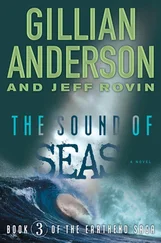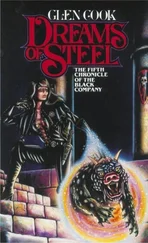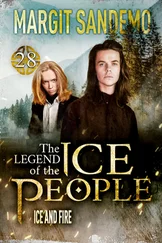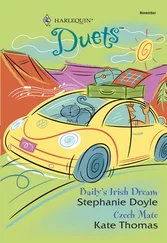The dozen others on board were mostly British Antarctic Survey scientists. The only one who seemed not to fit—besides Mikel—was a young man sitting across the aisle, Siem der Graaf. Prior to takeoff, Mikel had overheard that he was half Dutch, half Kenyan, with British citizenship. Siem wasn’t a fellow researcher, which meant he was maintenance, which meant he was a replacement for either the dead or the missing staff member at Halley. The scientists weren’t rude to him; they just had other things to discuss, data to review, topics of mutual importance to mull in huddled secrecy.
Mikel had not learned much more than the fact that troubles at the base, and momentarily favorable weather conditions, had caused the flight to be moved a week ahead of schedule. The scientists had tolerated Mikel’s presence only because Flora had pulled some strings with the Royal Air Force; although what strings Mikel was not privy to.
At some point over the Weddell Sea, Siem—his six-foot-seven-inch frame wedged with miserable discomfort into his narrow seat, head barely clearing the bulkhead—gave up waiting for a friendly chat that never came and plugged his ears with music while he reviewed documents on his tablet. The music leaking from his headphones was heavy metal, especially slow and grim, probably from Finland. Mikel knew he could use this man. Now all he needed to find was his target.
Just a half hour or so out from the base, still over the Weddell, Mikel identified it. Mentally noting the location using landmarks, he said nothing to the other passengers.
There was one other outsider on the flight, Ivor, a garrulous Glaswegian who was getting on just fine with the scientists because he had information they needed. At different times during the eight-hour flight he had walked them through laptop training sessions about the eight main modules of Halley VI and the outlying buildings, dressing for the weather, the components of a climbing kit, and driving a Ski-Doo. Mikel paid as much attention to all of these as discretion would permit. He’d learned his survival skills when he traveled to McMurdo Station in Antarctica a few years back, but a refresher was most welcome. The Glaswegian made the scientists parrot back what seemed like six hundred safety concerns and precautionary measures, and couched everything in terms of potential damage to the base and the machines, not the people.
The plane landing was lumpy, skidding, and as backbone-unfriendly as the flight itself. The passengers zipped and buttoned their coats, donned tinted goggles against the near-perpetual brilliant daylight, and hurried to the nearest module.
Mikel was taken to a guest bunk but did not stay there. Instead he kept close to Siem as the young man oriented himself to his new surroundings. Finally, Mikel found his moment to approach Siem in the large red modular building that served as the social heart of the base.
He and the replacements were being served one of the additional meals that enabled Halley VI residents to ingest the six thousand calories a day required for the climate. In the dining area, the Glaswegian placed his tray as close as possible to the pool table and challenged one of the female scientists to a game. Siem walked carefully across the blue carpet, trying to avoid building up static, though he’d been told it was a futile effort in Antarctica. He stopped at a table full of red chairs and maintenance staffers and almost as a body they found excuses to stand and leave.
When Mikel sat opposite him he saw that Siem’s nose was bleeding. He handed the young man a tissue and smiled.
“Those are fairly standard around here,” Mikel said, slicing into his passable version of chicken cordon bleu. “Cold, dry air, increase in blood pressure—bad combination.”
“So I’d heard,” Siem mumbled, stuffing shreds of tissue in both nostrils. “What do they think, that I’ve got a disease?”
“No, I’m sure they’re used to it.”
“Then why—?”
“It’s their version of a hazing,” Mikel explained. “You’re one of them when you don’t bleed or get debilitating earaches. Didn’t you get briefed?”
“Briefly,” Siem joked, “and not about the social customs. This was all very quick.”
“So I’ve heard.”
Siem turned to his own plate, began slicing. “Where are you from?”
“Pamplona, originally.”
“You’re not a scientist, though? You weren’t in on the discussions.”
“No, I’m not part of the cabal,” Mikel laughed. “I’m an anthropologist with a strong streak of archaeologist.”
“A sensible combination. What are you studying here—are there ancient igloos?”
“It’s independent research newly underwritten by the US government about Bronze Age magnetic fields and their effects on early civilization.”
“That’s not something I’d think politicians would care about,” Siem said.
Mikel leaned forward conspiratorially. “It is, when it’s supported by big donor constituents.”
“Ah. ‘Money makes honey,’ as my father used to say.”
“Very true. So I’m here to collect rock samples when I can find them, and spend the rest of my time on readouts, like everyone else.”
“Very, very heady.”
The cover story was not entirely farfetched. While Mikel was still in the doctoral program at the University of Córdoba, he had published a paper on the impact of the geologically active Ring of Fire on early Asian society. That study caught the attention of Flora Davies, which was how he came to be employed by the Group.
“I’m always looking for grand answers,” Mikel went on. “I get that from my grandmother’s side of the family. She was very religious, believed there was a kind of sticky fluid substance that bound everything in the universe to every other thing. Called it ‘the Adur.’”
“What kind of religion teaches that?”
“It’s a Basque pagan faith from before the fourth century. My grandmother was Catholic, devoutly so, but for many Basques the old ways were an inseparable part of their culture.”
“Do you believe in that?”
“I don’t know about the Adur, exactly, but I want to believe that there’s still a little bit of wonder out there,” Mikel replied. “You find similar concepts in many, many cultures—the Chinese, the Navajo and Cheyenne of North America, the Polynesians. These and many other people had no contact with one another yet they came up with the same ideas, the same archetypes.”
Siem made an approving sound. “So what makes the Basque idea special?”
“Good question,” Mikel said. “The Adur connected not just objects to objects, people to people, and people to objects, but all things to their names. One of the major evolutions of the human brain was its leap to symbolism, to understanding representation.”
“Like cave paintings?”
“Exactly like that, whether it was depicting a battle or drawing a map to the nearest hunting ground. Euskara is arguably one of the oldest languages of Homo sapiens , and in it the Basques had made that crucial leap in cognition—object and name, one and the same. And they actually named the leap itself.”
“You mean that ‘Adur.’”
Mikel nodded. “My grandmother had been raised on the universal, all-encompassing importance of this concept. So she read everything she could find, talked to every priest she met, never stopped searching.” He leaned in slightly. “I’m the same. It’s why I started researching ancient cultures, to learn what they knew. To rediscover what the world has forgotten.”
Siem struggled with that, but nodded. “I hear what you’re saying, but I don’t think I could chase phantoms. I like to work with things I can feel and fix.”
“Oh, I do a lot of that,” Mikel said. “There are no phantoms, but there are always relics, ancient tablets, buried cities, tombs.”
Читать дальше












